How to integrate nginx with lua to operate mysql
Implementation ideas
Configure the blacklist directly in nginx and implement it by writing logical blocks;
In the server (Java) Write a filter and uniformly intercept in the filter;
Write an interceptor in the server (Java) and uniformly intercept in the interceptor;
Here are 3 implementation ideas. As for the implementation solutions, there may be more, but if we think about it, writing logical blocks in nginx does not seem to be what many people are good at; it is not impossible to do it at the code level, but In this way, during peak business periods involving high concurrency, this will inevitably put greater pressure on the back-end services. So are there any other better ways to deal with it?
This is about Lua, that is, nginx acts as a gateway and still acts as a proxy server. Since nginx can integrate Lua, Lua is used to cooperate to complete the design of the above business implementation;
ngx_lua Module concept
ngx_lua module is developed by Taobao technical team by integrating the lua interpreter into Nginx;
Lua scripts can be used to implement business logic , due to Lua's compactness, speed and built-in coroutines, it greatly reduces the cost of business logic implementation while ensuring high concurrency service capabilities;
OpenRestry
OpenResty is a high-performance Web platform based on Nginx and Lua. It integrates a large number of sophisticated Lua libraries, third-party modules and most dependencies; it is used to easily build a web platform that can handle ultra-high concurrency, Highly scalable dynamic web applications, web services and dynamic gateways;
OpenResty has integrated Nginx and Lua, so it will be more convenient to use;
To put it simply, by directly installing and using OpenRestry, you can achieve the effect of using Nginx and Lua at the same time. At the same time, based on OpenRestry, you can also operate other middleware internally, such as mysql, redis, kafka, etc., so that The business architecture has greater flexibility in design;
OpenRestry installation steps
1. Download OpenRestry
wget https://openresty.org/download/openresty-1.15.8.2.tar.gz
2. Unzip the file
tar -zxf openresty-1.15.8.2.tar.gz
3. Enter the OpenResty directory to perform configuration
This step is somewhat similar to nginx source code installation and configuration of related environment variables. Just use the default ones here;
./configure

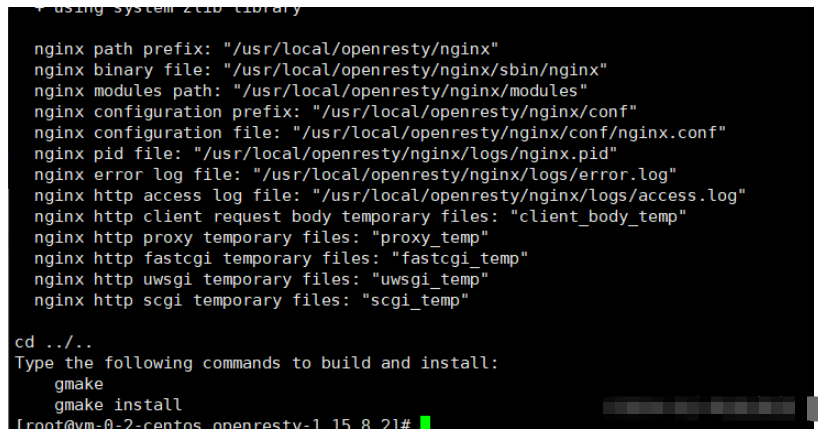
4. Execute the command: make && make install
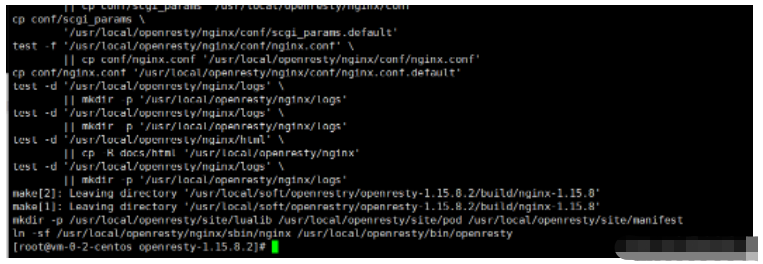

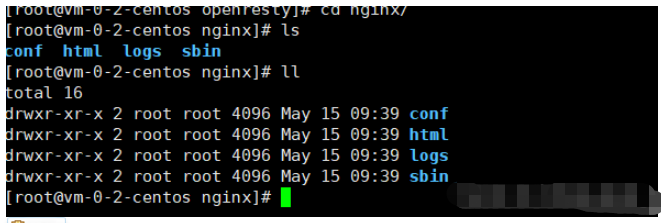
location /lua {
default_type 'text/html';
content_by_lua 'ngx.say(" <h2 id="hello-openRestry-nbsp-lua">hello,openRestry lua</h2>")';
}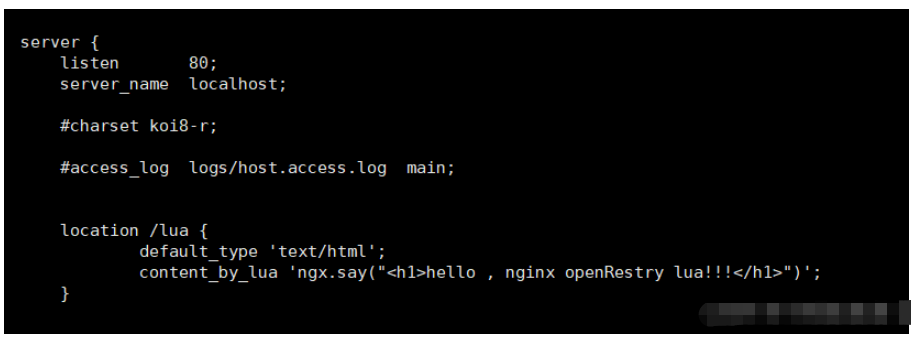



1, init_by_lua*
This command is executed every time Nginx reloads the configuration. It is used to complete some time-consuming operation module loading, or to initialize some global configurations
2, init_worker_by_lua*
This command is used to start some scheduled tasks, such as heartbeat check, scheduled pull server configuration, etc.
3, set_by_lua*
This instruction only needs to be used to assign a value to a variable. This instruction can only return one value at a time, and the result value is given to the specified variable in Nginx
4, rewrite_by_lua*
is used to perform internal URL rewriting or external redirection, typically such as pseudo-static URL rewriting. This phase is executed by default at the end of the rewrite processing phase (and nginx's own rewrite function There are similar places)
5、access_by_lua*
该指令用于访问控制,例如,只允许内网IP访问
6、content_by_lua*
该指令是使用最多的指令,大部分任务是在这个阶段完成的,其他过程往往为这个阶段准备数据,正式处理往往都在本阶段执行
7、header_filter_by_lua*
用于设置应答消息的头部信息
8、body_filter_by_lua*
该指令对响应数据进行过滤,如截断、替换
9、log_by_lua*
该指令用于log请求处理阶段,用Lua代码处理日志,但并不替换原有 log处理
10、balancer_by_lua*
该指令主要作用是用来实现上游服务器的负载均衡器算法
11、ssl_certificate_by_*
该指令作用在Nginx和下游服务开始一个SSL握手操作时将允许本配置项的Lua代码
一个使用指令的需求
接下来针对上面提到的各种指令,来做一个简单的需求
nginx接收到请求后,根据参数中gender传入的值,如果gender传入的是1 则在页面上展示 “先生” , 如果gender传入的是0,则在页面上展示“女士”
代码实现
注意:使用指令编写的基本步骤是,在nginx.conf模块中,自定义localtion块中编写lua的相关代码即可
location /getByGender {
default_type 'text/html';
set_by_lua $param "
local uri_args = ngx.req.get_uri_args()
local gender = uri_args['gender']
local name = uri_args['name']
if gender =='1' then
return name..':先生'
elseif gender=='0' then
return name..':女士'
else
return name
end
";
charset utf-8;
return 200 $param;
}然后启动nginx做一下测试
1)访问服务,不携带任何参数
这时候无任何返回信息

2)访问服务,携带name参数

3)访问服务,携带name和gender参数

更多的指令可以参照此类方式编写,但是前提需要掌握一点lua的基本语法
lua操作redis
Redis在系统中经常作为数据缓存、内存数据库使用,在各类互联网项目中扮演着非常重要的作用;
Lua-resty-redis库是OpenResty提供的一个操作Redis的接口库,可根据自己的业务情况做一些逻辑处理,适合做复杂的业务逻辑。所以下面将以Lua-resty-redis来进行说明。
lua-resty-redis环境准备
1、提前安装好redis并启动服务
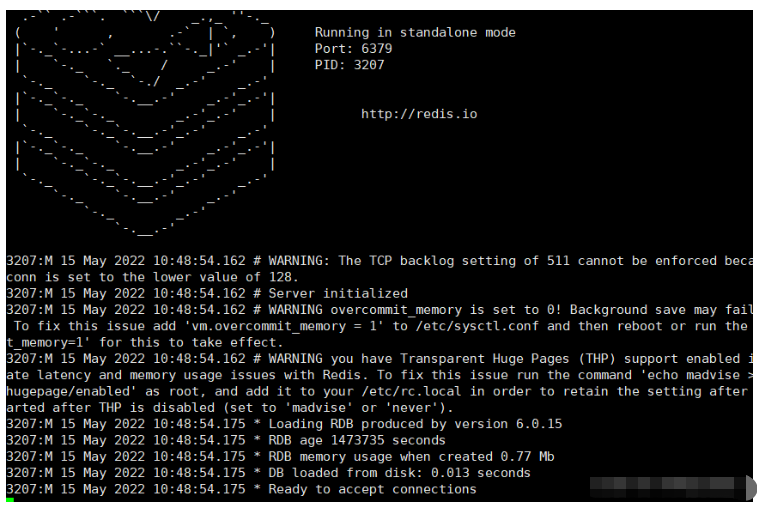
2、测试下redis客户端
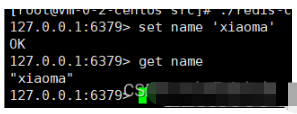
lua-resty-redis提供了访问Redis的详细API,包括创建对接、连 接、操作、数据处理等。这些API基本上与Redis的操作是对应起来的
lua-resty-redis常用API
1、lua中导入redis依赖
redis = require "resty.redis"
2、new,创建一个Redis对象
redis,err = redis:new()
3、创建redis连接
ok:连接成功返回 1,连接失败返回nil;
err:返回对应的错误信息;
ok,err=redis:connect(host,port[,options_table])
4、设置请求操作Redis的超时时间
redis:set_timeout(time)
5、close,关闭连接
关闭当前连接,成功返回1;
失败返回nil和错误信息;
ok,err = redis:close()
补充说明:
在lua-resty-redis中,所有的Redis命令都有自己的方法;方法名字和命令名字相同,只是全部为小写;
具体实现效果展示
在nginx.conf模块下,添加如下的location内容
location /redis {
default_type "text/html";
content_by_lua_block {
local redis = require "resty.redis" -- 引入 Redis
local redisObj = redis:new() --创建Redis对象
redisObj:set_timeout(3000) --设置超时数据为3s
local ok,err = redisObj:connect("IP",6379) --设置redis连接信息
if not ok then --判断是否连接成功
ngx.say("failed to connection redis",err)
return
end
ok,err = redisObj:set("username","TOM") --存入 数据
if not ok then --判断是否存入成功
ngx.say("failed to set username",err)
return
end
local res,err = redisObj:get("username") --从 redis中获取数据
ngx.say(res) --将数据写会消息体中
redisObj:close()
}
}重启nginx,进行测试,直接在浏览器访问一下如下地址,可以看到数据成功写入到redis


ngx_lua操作Mysql
MySQL是一个使用广泛的关系型数据库。在ngx_lua中,MySQL有两种访问模式,分别是
用ngx_lua模块和lua-resty-mysql模块: 这两个模块是安装OpenResty时默认安装的;
使用drizzle_nginx_module(HttpDrizzleModule)模块:需要单独
安装,这个库现不在OpenResty中
lua-resty-mysql
lua-resty-mysql是OpenResty开发的模块,使用灵活、功能强大,适合复杂的业务场景,同时支持存储过程访问;
lua-resty-mysql实现数据库查询
1、准备好mysql服务

2、提前创建一张表
CREATE TABLE `users` ( `id` int(10) NOT NULL AUTO_INCREMENT, `username` varchar(255) DEFAULT NULL, `birthday` date DEFAULT NULL, `salary` double(10,2) DEFAULT NULL, PRIMARY KEY (`id`) ) ENGINE=InnoDB DEFAULT CHARSET=utf8;
并提前准备几条数据
INSERT INTO `mydb`.`users` (`id`, `username`, `birthday`, `salary`) VALUES ('1', 'xiaowang', '1991-03-15', '9000.00'); INSERT INTO `mydb`.`users` (`id`, `username`, `birthday`, `salary`) VALUES ('2', 'xiaoma', '1992-07-15', '8000.00');
lua-resty-mysql API说明
1、引入"resty.mysql"模块
local mysql = require "resty.mysql"
2、创建MySQL连接对象
遇到错误时,db为nil,err为错误描 述信息
db,err = mysql:new()
3、创建连接对象
ok,err=db:connect(options)
options是一个参数的 Lua表结构,里面包含数据库连接的相关信息
host:服务器主机名或IP地址
port:服务器监听端口,默认为3306
user:登录的用户名
password:登录密码
database:使用的数据库名
4、设置子请求的超时时间(ms)
包括connect方法
db:set_timeout(time)
5、关闭当前MySQL连接并返回状态
如果成功,则返回1;如果出现任 何错误,则将返回nil和错误描述
db:close()
6、异步向远程MySQL发送一个查询
如果成功则返回成功发送的字节 数;如果错误,则返回nil和错误描述
bytes,err=db:send_query(sql)
7、从MySQL服务器返回结果中读取一行数据
res返回一个描述OK包 或结果集包的Lua表
rows指定返回结果集的最大值,默认为4
如果是查询,则返回一个容纳多行的数组。每行是一个数据列的 key-value对
res, err, errcode, sqlstate = db:read_result() res, err, errcode, sqlstate = db:read_result(rows)
返回结果类似下面这样
{
{id=1,username="TOM",birthday="1988-11- 11",salary=10000.0}, {id=2,username="JERRY",birthday="1989-11- 11",salary=20000.0}
}如果是增删改,则返回类似如下数据
{
insert_id = 0,
server_status=2,
warning_count=1,
affected_rows=2,
message=nil
}返回值说明:
res:操作的结果集
err:错误信息
errcode:MySQL的错误码,比如1064
sqlstate:返回由5个字符组成的标准SQL错误码,比如 42000
具体操作案例
将下面的内容添加到server块,然后重启nginx
location /mysql {
content_by_lua_block{
default_type "text/html";
local mysql = require "resty.mysql"
local db = mysql:new()
local ok,err = db:connect{
host="127.0.0.1",
port=3306,
user="root",
password="123456",
database="mydb"
}
db:set_timeout(3000)
db:send_query("select * from users where id =1")
local res,err,errcode,sqlstate = db:read_result()
ngx.say(res[1].id..","..res[1].username..","..res[1]. birthday..","..res[1].salary)
db:close()
}
}可以看到,通过访问mysql这个路径,成功查询到数据库中ID为1的这条数据

使用cjson对查询结果进行格式化
从上面的返回结果来看,这种形式的返回数据在解析的时候其实并不是很友好,于是可以使用lua-cjson处理查询结果
使用步骤
步骤一:引入cjson
local cjson = require “cjson”
步骤二:调用cjson的encode方法进行类型转换
cjson.encode(res)
下面对上面程序模块做简单的改造
location /mysql-cjson {
default_type "text/html";
content_by_lua_block{
local cjson = require "cjson"
local mysql = require "resty.mysql"
local db = mysql:new()
local ok,err = db:connect{
host="127.0.0.1",
port=3306,
user="root",
password="123456",
database="mydb"
}
db:set_timeout(3000)
db:send_query("select * from users")
local res,err,errcode,sqlstate = db:read_result()
ngx.say(cjson.encode(res))
for i,v in ipairs(res) do
ngx.say(v.id..","..v.username..","..v.birthday..",".. v.salary)
end
db:close()
}
}然后再次进行测试,这时候就以json的格式对数据进行了展现

增删改操作
location /mysql-cjson {
default_type "text/html";
content_by_lua_block{
local cjson = require "cjson"
local mysql = require "resty.mysql"
local db = mysql:new()
local ok,err = db:connect{
host="127.0.0.1",
port=3306,
user="root",
password="123456",
database="mydb"
}
db:set_timeout(3000)
-- 查询操作
db:send_query("select * from users where id=1")
-- 插入数据
--local res,err,errcode,sqlstate = db:query("insert into users(id,username,birthday,salary) values(3,'lifei','1995-10-17',3000)")
-- 修改数据
--local res,err,errcode,sqlstate = db:query("update users set username='lisi' where id = 1")
-- 删除数据
--local res,err,errcode,sqlstate = db:query("delete from users where id = 2")
db:close()
}
}The above is the detailed content of How to integrate nginx with lua to operate mysql. For more information, please follow other related articles on the PHP Chinese website!

Hot AI Tools

Undresser.AI Undress
AI-powered app for creating realistic nude photos

AI Clothes Remover
Online AI tool for removing clothes from photos.

Undress AI Tool
Undress images for free

Clothoff.io
AI clothes remover

AI Hentai Generator
Generate AI Hentai for free.

Hot Article

Hot Tools

Notepad++7.3.1
Easy-to-use and free code editor

SublimeText3 Chinese version
Chinese version, very easy to use

Zend Studio 13.0.1
Powerful PHP integrated development environment

Dreamweaver CS6
Visual web development tools

SublimeText3 Mac version
God-level code editing software (SublimeText3)

Hot Topics
 1377
1377
 52
52
 How to check the running status of nginx
Apr 14, 2025 am 11:48 AM
How to check the running status of nginx
Apr 14, 2025 am 11:48 AM
The methods to view the running status of Nginx are: use the ps command to view the process status; view the Nginx configuration file /etc/nginx/nginx.conf; use the Nginx status module to enable the status endpoint; use monitoring tools such as Prometheus, Zabbix, or Nagios.
 How to redirect in nginx
Apr 14, 2025 am 08:42 AM
How to redirect in nginx
Apr 14, 2025 am 08:42 AM
Methods for redirecting through Nginx are 301 permanent redirects (update links or mobile pages) and 302 temporary redirects (handling errors or temporary changes). Configuring redirection involves using location directives in server blocks, advanced features include regular expression matching, proxy redirection, and condition-based redirection. Common uses of redirects include updating URLs, handling errors, redirecting HTTP to HTTPS, and guiding users to a specific country or language version.
 How to enable stream in nginx
Apr 14, 2025 am 09:45 AM
How to enable stream in nginx
Apr 14, 2025 am 09:45 AM
How to enable Nginx's Stream module? Enabling the Stream module requires six steps: Installing the Stream module configuration Nginx Create Stream Server Block Configuration Stream Server Options Restart Nginx Verification Enable
 How to solve nginx403
Apr 14, 2025 am 10:33 AM
How to solve nginx403
Apr 14, 2025 am 10:33 AM
How to fix Nginx 403 Forbidden error? Check file or directory permissions; 2. Check .htaccess file; 3. Check Nginx configuration file; 4. Restart Nginx. Other possible causes include firewall rules, SELinux settings, or application issues.
 How to build a website in nginx
Apr 14, 2025 am 11:21 AM
How to build a website in nginx
Apr 14, 2025 am 11:21 AM
Using Nginx to build a website is carried out in five steps: 1. Install Nginx; 2. Configure Nginx, mainly configuring the listening port, website root directory, index file and error page; 3. Create website files; 4. Test Nginx; 5. Advanced configuration can be carried out as needed, such as SSL encryption, reverse proxy, load balancing and caching.
 How to set nginx access address to server ip
Apr 14, 2025 am 11:36 AM
How to set nginx access address to server ip
Apr 14, 2025 am 11:36 AM
To set the access address to server IP in Nginx, configure the server block, set the listening address (such as listen 192.168.1.10:80) Set the server name (such as server_name example.com www.example.com), or leave it blank to access the server IP and reload Nginx to apply the changes
 How to solve the problem of nginx cross-domain
Apr 14, 2025 am 10:15 AM
How to solve the problem of nginx cross-domain
Apr 14, 2025 am 10:15 AM
There are two ways to solve the Nginx cross-domain problem: modify the cross-domain response header: add directives to allow cross-domain requests, specify allowed methods and headers, and set cache time. Use CORS modules: Enable modules and configure CORS rules that allow cross-domain requests, methods, headers, and cache times.
 How to configure nginx to display domain name
Apr 14, 2025 am 10:57 AM
How to configure nginx to display domain name
Apr 14, 2025 am 10:57 AM
Configuring display domain names in Nginx requires the following steps: Edit the configuration file (usually /etc/nginx/nginx.conf). Add a server block, specify your domain name and its alias (for example: server { listen 80; server_name example.com www.example.com; }). Specify the web root directory (for example: root /var/www/example.com;). Save the configuration file and reload Nginx (sudo nginx -t && sudo nginx -s reload). verify




